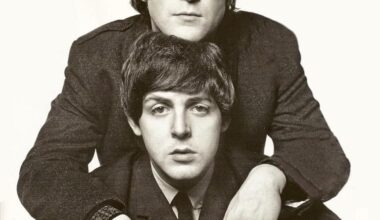
In the summer of 1963, Bob Dylan made his festival debut at Newport, Rhode Island, marking the first of three consecutive appearances at this celebrated gathering of folk legends.
On July 27th, during a Saturday afternoon workshop, Dylan performed “North Country Blues”, introducing himself not just through a captivating melody but through a deep, haunting narrative.
“North Country Blues” appeared a few months later on Dylan’s third studio album, The Times They Are a-Changin’ (released January 1964), and was recorded in August 1963. Crafted with just two chords (Cm & Bb) and structured as ten verses with an ABCB rhyme scheme, the song tells a grim and deeply affective story set in a mining town, likely drawn from Dylan’s Minnesota roots on the Mesabi Iron Range.
In the song, a female narrator recounts the slow decay of her community: businesses have shuttered, family members have died or left, and ultimate isolation awaits. It’s a chilling testimony to economic collapse and emotional desolation. Scholar M. Marqusee described the song as a “formally conservative exercise in first-person narrative,” yet one filled with haunting variation and expressive power.
One particularly poignant line encapsulates the song’s emotional weight:
“Where the sad, silent song made the hour twice as long.”
As one commentary notes, this line “defines the entire song of desperation—in just one line”.
When Dylan stepped onto the Newport stage, he wasn’t yet the icon he would become—but his presence was unmistakable. In a workshop hosted by Jean Ritchie, among a lineup of folk legends, Dylan closed the afternoon with “North Country Blues,” followed by a performance of “With God on Our Side” alongside Joan Baez.
Critics later reflected that Dylan’s delivery, barely distinguishable from speech, already bore the signature melodic drawl of his later style—poetic, intimate, and unyielding.
Though the film The Other Side of the Mirror (2007) highlights Dylan’s rising “charisma” and sense of power across his Newport performances, it’s clear that in 1963, “North Country Blues” resonated quietly but profoundly—hinting at the depth and reach his songwriting would attain.
“North Country Blues” isn’t often spotlighted in Dylan’s catalog, yet it stands as a masterclass in storytelling minimalism—a folk ballad that pulses with sorrow and poetic precision. In the context of Newport ’63, the song revealed Dylan’s commitment to the folk tradition and his ability to channel communal heartbreak through personal narrative.
This performance served as an early and clear declaration of Dylan’s path: one shaped by truth-telling lyrics, stark realism, and emotional authenticity.





